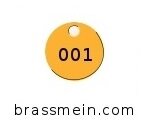A Simple Guide to the Four Main Types of Building Lighting
Lighting is one of the most important aspects of any building. It can be used to create different atmospheres, make a space more functional, or simply make it more aesthetically pleasing. There are many different types of lighting available on the market today, and each has its own unique benefits and drawbacks. In this article, we will take a look at the four main types of building lighting: incandescent, fluorescent, LED, and halogen.

What are the four major aspects of lighting?
Type of lightbulb
The first, and most important, aspect of lighting is the type of lightbulb that is being used. Incandescent bulbs are the most common type of lightbulb, and they work by passing an electric current through a wire filament. This wire filament then heats up and produces light. Fluorescent bulbs work in a similar fashion, but they use a different type of gas to produce light. LED bulbs work by passing a current through a semiconductor material, which then produces light. Halogen bulbs work by using a halogen gas to produce light.
Color of the light
The second aspect of lighting is the color of the light that is being produced. Incandescent bulbs tend to produce a warm, yellow light, while fluorescent bulbs tend to produce a cooler, blue light. LED bulbs can produce either a warm or cool light, depending on the type of semiconductor material that is being used. Halogen bulbs tend to produce a very bright, white light.
Intensity of the light
The third aspect of lighting is the intensity of the light that is being produced. This is measured in lumens, and the higher the number of lumens, the brighter the light will be. Incandescent bulbs typically produce around 800 lumens, while fluorescent bulbs can produce up to 2,500 lumens. LED bulbs can produce upwards of 10,000 lumens. Halogen bulbs are typically the brightest type of lightbulb, and they can produce up to 30,000 lumens.
Wattage of the lightbulb
The fourth, and final, aspect of lighting is the wattage of the lightbulb. This measures how much electricity the lightbulb uses, and it is typically measured in watts. The higher the wattage, the more electricity the lightbulb will use. Incandescent bulbs typically use around 40 watts, while fluorescent bulbs can use up to 100 watts. LED bulbs can use as little as 1 watt, or as much as 100 watts. Halogen bulbs typically use between 20 and 50 watts.
Incandescent Lighting
Incandescent lighting is one of the oldest and most commonly used types of lighting. Incandescent bulbs work by passing an electric current through a wire filament, which heats up and produces light. These bulbs are very inexpensive to produce and are widely available. However, they are also very inefficient, as most of the energy used to power them is lost as heat.
Fluorescent Lighting
Fluorescent lighting is another common type of lighting, and it is significantly more efficient than incandescent lighting. Fluorescent bulbs work by passing an electric current through a gas, which then produces ultraviolet light. This ultraviolet light then interacts with a phosphor coating on the inside of the bulb, which produces visible light. Fluorescent bulbs are available in a variety of shapes and sizes, and they are often used in office and industrial settings.
LED Lighting
LED lighting is a relatively new technology that is quickly gaining popularity. LEDs, or light-emitting diodes, are semiconductor devices that convert electricity into visible light. LED lighting is very efficient, as it uses far less energy than both incandescent and fluorescent lighting. Additionally, LEDs have a very long lifespan and are not susceptible to breakage like traditional bulbs.
Halogen Lighting
Halogen lighting is a type of incandescent lighting that uses a halogen gas instead of air. Halogen bulbs work in the same way as traditional incandescent bulbs, but the halogen gas allows them to operate at a higher temperature. This makes halogen bulbs more efficient than traditional incandescent bulbs. Halogen lighting is often used in task lighting, as it produces a bright, focused light.
Conclusion
There are a variety of different types of lighting, each with its own advantages and disadvantages. The type of lighting that is best for you will depend on your specific needs.

